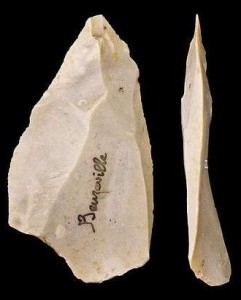MONDAY, 23 MAY 2011
Traditionally, such sites in Russia’s high latitudes would have been expected to show technological remains belonging to a modern human stone culture known as the Upper Palaeolithic. Excavations at the site of Byzovaya in the western foothills of the Polar Urals, however, have uncovered over 300 stone tools that unexpectedly appear to belong to the Mousterian Middle Palaeolithic, typically associated with Neanderthals.Carbon-14 and optically stimulated luminescence techniques have dated the remains to 31,000-34,000 years old, just when Neanderthals are thought to have gone extinct [1]. Evidence that Neanderthals existed at this time in northern Russia challenges the current picture that the last Neanderthals retreated to warm ‘refugia’ in southern Europe prior to their extinction, and there remains debate about whether the site was actually inhabited by modern humans, who used similar tools [2]. Future discovery of bones or DNA would provide stronger support for the Neanderthal origin of the Byzovaya artefacts. Nevertheless, the discovery site raises the possibility that the story of the Neanderthals demise may be more complicated than previously thought.
Written by Talya Underwood
References:
- Slimak, L., Svendsen, J.I., Mangerud, J., Plisson, H., Heggen, P.H., Brugère, A. & Pavlov, P.Y. Late Mousterian Persistence near the Arctic Circle. Science, 2011; 332 (6031): 841 DOI: 10.1126/science.1203866
- Balter, M. Did Neanderthals linger in Russia’s far north? Science, 2011; 332 (6031):778 DOI: 10.1126/science.332.6031.778

